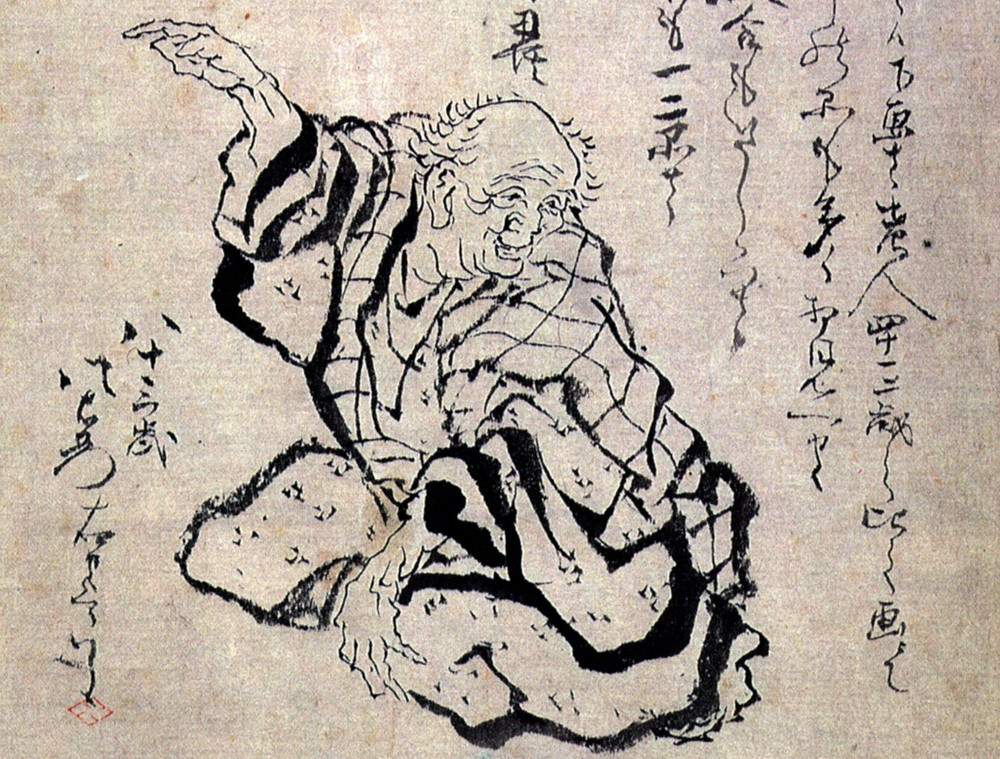From Oct. 8, 2022 to Jan. 31, 2023, the Art Treasures Gallery of the Foundation for Agricultural Education, housed in the Monumental Complex of St. Peter’s, Perugia will host the exhibition In the Tip of the Brush. Nature and Culture in Japanese Art, promoted by CAMS - Centro di Ateneo per i Musei Scientifici, University of Perugia and Fondazione per l’Istruzione Agraria di Perugia. A journey throughJapanese art, with over fifty works from the 13th century to the present.
Divided into ten sections devoted to the various aspects of Japanese culture connected with ink painting, the exhibition will be introduced by Katsushika Hokusai “in person,” the most famous Japanese artist ever in the West, while the other sections will be virtually presented through animated videos by some of the most famous figures in the history of Japanese culture: Yishan Yining, Matsuo Basho, Maruyama ÅŒkyo, Sesson Shukei, Kobori Enshu, Watanabe Seitei.
Landscapes, gardens, ikebana, poetry, letters, Zen painting. The art of calligraphy is introduced by a work attributed to Yishan Yining - Issan Ichinei, the Chinese monk who in the 13th century spread Zen among Japanese samurai and feudal lords. Matsuo Basho, Japan’s most famous poet, explains why one of his letters on display is considered a work of art. Maruyama ÅŒkyo, Japan’s most influential painter of the 18th century, starting with one of his paintings depicting a rooster and a hen explains the characters of his academic school of painting based on observation from life. Sesson Shukei, the greatest painter of sixteenth-century Japan illustrates, from a work attributed to him, the tradition of landscapes made with inkblots. Zen painting is represented, among others, by an Enso or circle of enlightenment, painted by Kobori Enshu in the seventeenth century. EnshÅ« was a talented and eclectic feudal lord who during his lifetime renewed the art of gardens, the tea ceremony andikebana, or the art of flower arrangement. Watanabe Seitei, the painter who astounded the Impressionists in 1878 with his technical skills, is featured in the exhibition with a diptych and a notebook of drawings.
The exhibition will offer lectures and workshops throughout the months in order to engage enthusiasts and younger audiences who will be able to try different artistic techniques of Oriental art.
It is a bond that starts from afar that between the Monumental Complex of St. Peter’s, now home to the Department of Agricultural Sciences of the University of Perugia, and Japan: in fact, on June 8, 1585, the first Japanese diplomatic mission to Europe arrived at St. Peter’s for a visit. Later called the Tensho Embassy, and lasting eight years, from 1582 to 1590, the embassy was organized by the Jesuit Alessandro Valignano, one of the most important figures of the so-called “Generation of Giants,” that is, the clergymen who succeeded, between the second half of the 16th century and the 17th century, in establishing the first fruitful cultural relations between European countries, China and Japan. In Perugia, as the chronicles of the time recount, four young men arrived “who are said by what to be certain to be of royal blood”: Ito Mancio, Michele Chijiwa, Giuliano Nakaura and Martino Hara, accompanied by the Jesuit Diego de Mesquita who acted as guide and interpreter. “They did not drink wine, but only tepid water”: this is one of the earliest accounts of tea consumption, and at the banquet organized by the city of Perugia, the four boys ate local food “sparingly,” but particularly appreciated dairy products. For Perugia, the visit of the Japanese was the greatest event of the late sixteenth century: the young men left “a perpetual memory of them,” not least because of the splendor of their purple silk dresses trimmed with gold. In recent years there has been increased interest in both the 1585 embassy and the later 1613-1620 embassy of Hasekura Tsunenaga, which was the last before Japan’s closure to outside contact. The two embassies are remembered in exhibitions, re-enactments and monuments in Japan and around the world.
The exhibition is open daily from 10 a.m. to 6 p.m.
Tickets: Full 5 euros, reduced 3 euros for children and young people between 7 and 17 years old, for over 65 years old, school groups; for tourist groups with more than 10 visitors, students, teachers and university employees, for visitors who show a ticket from St. Peter’s Church.
Free for children under 6 years of age, visitors with disabilities and one accompanying person, accompanying teachers, tour guides in the exercise of their professional activity, registered journalists.
Image: A drawing by Hokusai
 |
| Japanese art on display in Perugia, from the 13th century to today |
Warning: the translation into English of the original Italian article was created using automatic tools. We undertake to review all articles, but we do not guarantee the total absence of inaccuracies in the translation due to the program. You can find the original by clicking on the ITA button. If you find any mistake,please contact us.